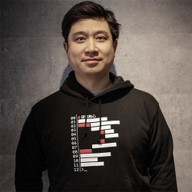Role-Based Access Control
3.3 Role-Based Access Control
ACTIONBRIDGE uses a clear and flexible role-based access control (RBAC) model at the project level. Roles determine what users can see and do within each project — from task editing to member management.
Available Roles
- Admin: Full access to all project features, including:
- Managing project settings and linked Teams tab
- Adding/removing members and changing their roles
- Creating, editing, deleting tasks
- Configuring workflows, priorities, and integrations
- Editor (default role): Focused on execution. Can:
- Create and edit tasks
- Comment and mention team members
- Change task status, priority, and assignments
- View task activity and deadlines
- Viewer: Read-only access. Can:
- View tasks and comments
- Track progress and read change logs
Default Role Assignment
- When a user joins a project (e.g. via Microsoft Teams tab), they are assigned the Editor role by default.
- Project admins can later upgrade or downgrade the role as needed.
Assigning and Changing Roles
- Only project admins can assign or change roles in the Members tab of Project Settings.
- Changes take effect immediately and are scoped to the current project only.
Best Practices
- Keep at least two Admins per project for redundancy and safety.
- Use the Viewer role for external reviewers, clients, or stakeholders.
- Audit roles regularly to maintain appropriate access control.
With project-scoped roles and default permissions that match user intent, ACTIONBRIDGE supports effective teamwork while keeping control, visibility, and responsibility clear.

Sho Shimoda
I spend as much time simplifying as I do coding—because making things easy is part of the product. I build systems that work beautifully and explain themselves.Category
Tags
Search History
Authors

Sho Shimoda
I spend as much time simplifying as I do coding—because making things easy is part of the product. I build systems that work beautifully and explain themselves.

Koki Nin
I focus on turning ideas into working code—refining architecture, fixing what’s broken, and improving what works. Sometimes the best “bug” becomes a feature.

Yasushi Motoki
I lead onboarding for AB, helping teams get value from day one. I focus on making a complex product feel simple, clear, and immediately useful.